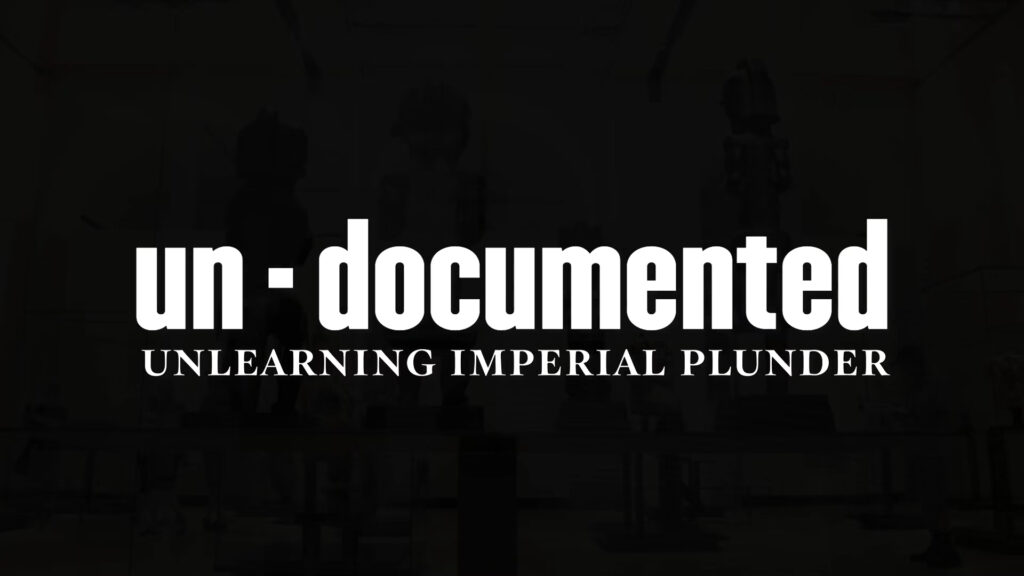Download Poster 1 here: PoCoConferencePoster1
Art History, Postcolonialism,
And the Global Turn
September / October 2020
About the Conference
As attention turns increasingly toward the “global” in art history, has postcolonialism fallen into obsolescence? Although touted as liberating, does the new “global” dispensation mark a rupture with history? What shall become of the generative critical theory that emerged in the 1980s and ‘90s, which partly grew out of reflections on anticolonial movements and post-independence nation-building? At best, global art history signals a germane awareness of “post-postcolonial” conditions precipitated by the accelerating globalization of finance capitalism. But would proponents of global contemporary art rather applaud putatively post-national freedoms than reckon with globalization’s deep disadvantages, while jettisoning the postcolonial as an allegedly outmoded product of elite theory?
This symposium asks whether, or to what degree, postcolonial discourses stand to be recuperated and revised in21st-century art history, architectural history, visual studies, and art criticism. In cases where political alliances have frayed and nascent national governments foundered, radical politics have sometimes given way to disillusionment, while transnationalism, hybridity, and self-fashioning settle in as new norms. For some in the Global South, “postcolonial” may indeed appear misleading as an overall designation. Nevertheless, what could be the implications of moving past postcolonialism as we arguably celebrate a cosmopolitan world that has yet to be fully realized? With neoliberalism giving rise to what art historian Anthony Gardner has called “a resurgent focus on North Atlantic relations,” what would be the cost of letting the postcolonial slip away?
In other words, what does the early 21st-century—so distant from the heyday of anticolonialism associated with ThirdWorld independence and liberation movements—hold for the practices and ambitions of artists, scholars, and critics? How have contemporary artists accommodated and/or resisted the demands of the global art world? What have the recent shifts in discourse meant—or what could they mean—for scholarly and curatorial (re)readings of chronologically staggered periods of culture clash and decolonization, including the possibilities, and failures of each moment? How might an ongoing or renewed “postcolonial” artistic output exceed the confines of galleries, biennials, art fairs, and museums? Do new interests in the “global” inevitably come at the expense of the postcolonial? Are the phenomena in question truly taking place on a global scale? Have scholars and artists from the Global South explored different terms and frameworks to structure their pursuits? To what extent are political limitations determined by working relationships with art institutions and their particular forms of patronage?
This conference invites artists, critics, curators, and scholars to query the state of postcolonialism in modern and contemporary art. Does (or should) the postcolonial retain relevance? Or how might it regain relevance? In what ways must new projects challenge the orthodoxies, binaries, and narratives of earlier discourses?
Conference Participants
Alexander Alberro
Alexander Alberro, Virginia Bloedel Wright `51 Professor of Modern and Contemporary Art History at Barnard College / Columbia University, is the author, most recently, of Abstraction in Reverse: The Reconfigured Spectator in Mid-Twentieth Century Latin American Art (University of Chicago, 2017). He is presently completing another book-length study, “The Shape of Contemporary Art,” that focuses on the relationship between art and the geography of globalization.
Ariella Aïsha Azoulay
Ariella Aïsha Azoulay is Professor of Modern Culture and Media and Comparative Literature at Brown University, a film essayist, and curator of archives and exhibitions. Her books include: Potential History – Unlearning Imperialism (Verso, 2019), Civil Imagination: The Political Ontology of Photography (Verso, 2012), The Civil Contract of Photography (Zone Books,2008) and From Palestine to Israel: A Photographic Record of Destruction and State Formation, 1947-1950 (Pluto Press2011). Among her films: Un-documented: Unlearning Imperial Plunder (2019), Civil Alliances, Palestine, 47-48 (2012). Among her exhibitions: Errata (Tapiès Foundation, 2019), and Enough! The Natural Violence of New World Order (F/Stop photography festival, Leipzig, 2016).
Jennifer Bajorek
Jennifer Bajorek is Associate Professor of Comparative Literature and Visual Studies at Hampshire College, USA, and Research Associate in the Research Centre in Visual Identities in Art and Design (VIAD) in the Faculty of Art, Design, and Architecture at the University of Johannesburg, South Africa. Her latest book, Unfixed: Photography and Decolonial Imagination in West Africa (Duke University Press, 2020), theorizes the relationship between photography and decolonial political imagination in Francophone west Africa in the years immediately following and leading up to independence. Her new projects include a multidisciplinary exploration (sonic, visual, and written) of the photographic archives of Fátúmbí (Pierre Verger) and new writing about visual and discursive representations of migrants and migration in contemporary France.
Tammer El-Sheikh
Tammer El-Sheikh is an Assistant Professor of Art History at York University in Toronto, Canada. He received his PhD in Art History at McGill University in Montreal for a dissertation on the reception of Palestinian-American critic Edward Said within the discipline of art history. The dissertation included an application of some of Said’s key concepts to an analysis of the work of Cairo-based contemporary artist Hassan Khan. Since then he has written as well on the work of Cairo-based artist Mahmoud Khaled in relation to the histories of surrealism, psychoanalysis and art education in mid-twentieth century Egypt. His research and teaching further encompasses modern and contemporary art and art criticism. El-Sheikh’s scholarly work has been published in the journals ARTMargins and Arab Studies Journal , and he has contributed reviews and feature essays to the periodicals Parachute, CMagazine , Canadian Art, and ETC .
Anthony Gardner
Anthony Gardner is Head of the Ruskin School of Art at the University of Oxford, where he teaches Contemporary Art History and Theory and is a Fellow of The Queen’s College. He is also a foreign worker in the UK. He has published widely on subjects including postcolonialism, postsocialism and curatorial histories, and is an editor of the MIT Press journal ARTMargins. Among his books are Mapping South: Journeys in South-South Cultural Relations (Melbourne,2013), Politically Unbecoming: Postsocialist Art against Democracy (MIT Press, 2015) and, also through MIT Press in 2015, the anthology Neue Slowenische Kunst: From Kapital to Capital (with Zdenka Badovinac and Eda Cufer), which was a finalist for the 2017 Alfred H. Barr Award for best exhibition catalogue worldwide. His latest book, co-authored with Charles Green (University of Melbourne), is Biennials, Triennials and documenta: The exhibitions that created contemporary art, published by Wiley-Blackwell in 2016. He is currently working on a study of curatorial debates and practices of alternative internationalisms from the 1950s-80s (such as the nonaligned movement and third cinema), called “Reworldings: Curatorial Histories from the Cold War.”
Sonal Khullar
Sonal Khullar is W. Norman Brown Associate Professor of South Asian Studies at the University of Pennsylvania. Her first book, Worldly Affiliations: Artistic Practice, National Identity, and Modernism in India, 1930-1990 (University of California Press, 2015), received the Bernard S. Cohn Book Prize of the Association of Asian Studies in 2017. She is completing a book manuscript, “The Art of Dislocation: Conflict and Collaboration in Contemporary Art from South Asia,” under advance contract with the University of California Press. Her research has been supported by the College Art Association, the American Council of Learned Societies, the American Institute of Indian Studies, the Paul Mellon Centre for Studies in British Art, and the Japan Foundation.
Diana Martinez
Diana Martinez is Assistant Professor of Architecture History and the Director of Architectural Studies at Tufts University. She is completing a book manuscript, “Concrete Colonialism: Architecture, Infrastructure, Urbanism and the American Colonial Project in the Philippines.”
Ijlal Muzaffar
Ijlal Muzaffar is an Associate Professor of Architectural History and the Graduate Program Director of the MA in Global Arts and Cultures at the Rhode Island School of Design. He has published widely on the intersection of architecture, planning and histories of globalization. His forthcoming book, The Periphery Within: Modern Architecture and the Making of the Third World, explores how modern architects and planners shaped new temporalities and spaces of intervention in the Third World development discourse.
Stanley Wolukau-Wanambwa
Stanley Wolukau-Wanambwa is a photographer and a writer who has contributed essays to publications by Vanessa Winship, George Georgiou, Rosalind Fox Solomon, Marton Perlaki and Paul Graham, been an artist-in-residence at Light Work, guest edited the Aperture Photobook Review, and written for Aperture, FOAM, the Barbican, The Photographer’s Gallery, and Rutgers University Press. His debut monograph, One Wall a Web, was published by ROMA Publications in 2018 and was awarded the Paris Photo–Aperture Foundation First PhotoBook Award. He has lectured at Yale, Cornell, New York University, and The New School.
Conference Organizers
Joshua I. Cohen
Joshua I. Cohen (Ph.D., Columbia University) is an Africanist art historian specializing in problems of cross-cultural exchange. His first book, The “Black Art” Renaissance: African Sculpture and Modernism across Continents, is published by the University of California Press (July 2020). His writing has additionally appeared in The Art Bulletin, African Arts, Journal of Black Studies, Journal of Southern African Studies, Burlington Magazine, and Wasafiri.
Foad Torshizi
Foad Torshizi is assistant professor of art of the Islamic world at RISD. He holds degrees in Comparative Literature andSociety and Middle Eastern and Asian Languages and Cultures (PhD and MPhil, Columbia University), Art History (MA,University of Minnesota) and Photography (MFA, Honar University of Tehran). Torshizi is completing a book manuscript tentatively titled “Unreadings: Contemporary Iranian Art and Art History’s Monolingualism.”
Vazira F-Y Zamindar
Vazira Fazila-Yacoobali Zamindar is associate professor of History at Brown University, and works on twentieth century histories of decolonization, displacement, war, non-violence, the visual archive, and contemporary art. She is most well-known for her book The Long Partition and the Making of Modern South Asia: Refugees, Boundaries,Histories (2007), and is presently completing a second entitled “The Ruin Archive: Art and War at the Ends of Empire” that interrogates the formations of art history and war through the north-west frontier of British India. She co-organized two Brown-Harvard Pakistani film festivals in 2014 and 2015, which resulted in the collection Love, War and Other Longings: Essays on Cinema in Pakistan (2020) and has written on the artists Sadequain and Zarina. She runs the series Art History from the South at Brown and is part of the Decolonial Collective on Migration of Objects and People.
Elena Kalkova
Graduate Assistant
Elena Kalkova is a multi-media Russian artist and scholar, living and working in the U.S. since 2017. In her practice and writings she explores the challenges of self-identification as a feminist person in a Post-Soviet space and reflects on the country’s problematic past and present, Russian queer histories, collective memory and trauma. She holds a B.A. in Liberal Arts from Tver State University (Tver, Russia) and is currently completing her graduate degree in Global Arts And Cultures from Rhode Island School of Design.
Conference Publication
ARTMargins, Vol. 12, No. 2 (June 2023)
We are delighted to announce the publication of a special issue in ARTMargins titled “Art History, Postcolonialism, and the Global Turn.” This special issue has been edited by the conference organizers, Joshua I. Cohen (CCNY, CUNY GradCenter), Foad Torshizi (RISD), and Vazira Zamindar (Brown), and features essays by Alexander Alberro (Barnard and Columbia), Jennifer Bajorek (Hampshire College), Tammer S. El-Sheikh (York), Sonal Khullar (Penn), and Ijlal Muzaffar (RISD). For a free copy of the special issue’s introduction please navigate to the Download section of this website.
Please visit the following ARTMargin’s page on MIT Press’s website for the full issue:
https://direct.mit.edu/artm/issue/12/2
Schedule
September ╱ October 2020
All meetings will be held on Zoom due to the COVID-19 pandemic.
Session I: Friday, September 25, 2020, 11:00 AM EST
Joshua I. Cohen, Conference Introduction and Opening Remarks
Abstract
Two books on the state of art history appeared this past year. Christopher S. Wood’s A History of Art History and a first English translation of Eric Michaud’s Barbarian Invasions both respond to pressures felt by art historians to account for a relativistic and ahistorical global contemporary art scene. The challenge for both is to show how global contemporary art with its dizzying range of practices, mediums, and sites of emergence can be meaningfully related to a discipline that was established on the basis of contrasts between, for Michaud the “barbarism” of 4th century Germanic tribes and the classical traditions of Rome, or for Wood ethnically distinct “biographies of form” in Riegl and Wölfflin’s work. In her double review Rachel Wetzler formulates the crisis resulting from these incongruities between art history’s past and present succinctly: “In both books the main narrative ends around 1960; when the story jumps to the present, it focuses not on new ways of understanding the past but solely on contemporary art—whose mode, we are told is amnesia.” While this decade marks the beginning of contemporary art as a period, it also saw the collapse of colonies in Africa, the MENA region andAsia. In this paper I will explore the resources for a decolonial, global and cosmopolitan contemporary art history in the published and unpublished work of Edward Said. Taking Palestinian- Canadian artist Amanda Boulos’s work as a case study I argue that, what strikes Michaud and Wood as a kind of amnesia in contemporary art might also be viewed as a strategic forgetting of the discipline’s Eurocentrism in service of ongoing struggles for decolonization.
Abstract
For Octavio Paz (1914-1998), India was Mexico’s intimate other. He wrote of his first visit there in 1951: “From the beginning everything I saw inadvertently evoked forgotten images of Mexico. The strangeness of India brought to mind that other strangeness: my own country.” In Paz’s poetry and prose, which abound in comparisons between India and Mexico and their experiences of European colonialism, strangeness is the basis for affinity, identity, and community. While Paz’s Essays on Mexican Art (1993) is a celebrated example of art criticism, his less well-known memoir In Light of India (in Spanish, Vislumbres de la India, 1995) is a singular meditation on South-South relations and models what I have elsewhere called postcolonial worldliness. Drawing on In Light of India, this paper offers methodological and historiographical reflections on the discipline of art history. Rather than locating Paz’s comparative method and postcolonial worldliness in the past—belonging to or associated with historical movements such as modernism, liberalism, internationalism, and decolonization—I consider its implications for the present. Paz’s writing illuminates the juxtaposition of the work of Indian painter Amrita Sher-Gil (b. 1913 – d. 1941) and American filmmaker Maya Deren (b. 1917 – d. 1961) at documenta 14 (2017), which highlighted affiliations in their feminism, primitivism, and cosmopolitanism. The intimate estrangements on view in Kassel’s Neue Galerie link Tahiti and Haiti as art-historical and world-historical projects, and establish them as foundational rather than exceptional to our thinking of art history, postcolonialism, and the global turn.
Panel discussion and Q&A moderated by Joshua I. Cohen.
Session II: Friday, October 9, 2020, 11:00 AM EST
Vazira Zamindar, Opening Remarks
Abstract
In Black Skin, White Masks, Frantz Fanon describes an event in which he suddenly becomes aware of his body in “triple person”—a realization that he was simultaneously responsible for his body, for his race, and for his ancestors. This paper will use Fanon’s concept of living in triple person to navigate the life and work of the American trained Filipino architect, Juan Arellano, and will focus mainly on the Philippine Legislative Building, a building designed and built just after the United States made its first formal promise to grant the Philippines its independence. Arellano’s most symbolically loaded task was the coordination of the building’s decorative program, which included allegorical sculptures of idealized Filipinos. Arellano’s thematization of the Filipino body took shape at a moment when the humanist canon, or Vitruvian man was being radically challenged by the still new fields of anthropology and ethnology. The resulting hybridization of historical and natural man would become the aesthetic basis of the Philippines’ postcolonial “national character,” and would provide an exemplary image of how postcolonial nations would fit into an imagined new world order, one in which cultural and ethnic identity, the symbolic currency of Wilsonian internationalist politics, fit within a barely diminished Western imperial scaffold.
Abstract
A key sequence of Sylvain Georges’s magisterial Qu’ils reposent en révolte, shot, between 2007 and 2010, in the “jungle” of Calais, shows several small groups of men removing their fingerprints. Some meticulously slice off their skin with razors; others methodically scorch their fingers on screws, heated to glowing over an open flame.In the sequence, both the filmmaker and his subjects—all of whom are African and black—offer a lucid and wry commentary on the relationships between the camera and the fingerprint, and between imaging technologies and European colonialism, whose unresolved legacies the men understand themselves to be living out. The violence of the men’s self-mutilation is, at the same time, evidence of their creativity and resourcefulness. At one point, as we see in close-up a man removing his prints with glowing metal, we hear voices talking off camera, explaining the challenges presented to their freedom of movement by the centralized European fingerprint database. One voice says, laughingly: “The Europeans have their techniques, but we, we also have our techniques.” The others chime in: “Africa united!” In this moment, the sequence seems less like a document of an ongoing catastrophe than a harbinger of things to come. I will explore Georges’s work and that of other artists making work about refugees and migrants in contemporary Europe, in which, I argue, something like an ex-colonial cartography of blackness emerges. My hope is that in looking at this new cartography—which both differs from “new-world blackness” and, today, rapidly approaches it—we may stage one confrontation between a purported slipping away of the postcolonial and a concomitant rise of globalism. For these new cartographies remain illegible without continual reference to (anti-)colonial histories. At the same time, they offer new utopian possibilities, which are being mapped in and by blackness in Europe.
Abstract
Are we still working in the age of “the global”? For the best part of three decades, the notion of globality has suggested the “free” movement (even if it was anything but free) of goods, services, people, and ideas, new modes of uneven development, new possibilities of intercultural exchange. The situation now seems very different. What we might call the nationalist-populist complex that has come to dominate many nations and cultures—in Modi’s India and Bolsanaro’s Brazil, in Trump’s America and Brexit Britain, post-Kaczynski Poland and isolationist Australia—has clearly threatened, if not quite brought to an end, the “global turn” heralded by this conference. The migration of people is, it seems, as terrifying as the migration of viruses, and both spur on an insidious xenophobia toward those scapegoats of yore, the “south” and the “east.” But the pressures that threaten the intercultural or even the global are not just borne by the right; they equally emerge in the conscience towards “flight shaming” or the persistent resistance (even from highly respected critics and curators)toward the surge and significance of biennale cultures beyond the North Atlantic. I am not immune to this conscience, having boycotted travel to the United States following the instigation of the travel ban, normalized by the U.S. Supreme Court and ever extending, that prevents many of our colleagues and friends from being able to engage in the same privilege of entering this country. By exploring what it means to break my boycott for this conference, I want to reflect on some of the challenges and urgencies facing our art-historical methods after the (post)colonial: our methods of writing and developing those histories and, just as importantly, our methods for researching and exchanging them. For if retreat, localization, and isolation are quickly becoming our new normal, then how can we persist in the kinds of art-historical practices—intercultural, translocal, perhaps even global—that promised to dissolve the North Atlantic hegemony and quarantining of the discipline?
Panel discussion and Q&A moderated by Vazira Zamindar.
Film Conversation: Saturday, October 10, 2020, 11:00 AM EST
Vazira Zamindar, Opening Remarks
A Conversation between the director of Un-Documented: Unlearning Imperial Plunder, Ariella Aïsha Azoulay, and Vazira Zamindar, and Stanley Wolukau-Wanambwa.
Ariella Aïsha Azoulay’s film, Un-Documented: Unlearning Imperial Plunder will be screened from October 2, 2020 until October 9, 2020. You can learn more about the film and register for access to the limited online screening on this website. On October 10, the director will be in conversation with Vazira Zamindar (History Department, Brown) and Stanley Wolukau-Wanambwa (Photography Department, RISD).
Session III: Friday, October 23, 2020, 11:00 AM EST
Foad Torshizi, Opening Remarks
Abstract
Some twenty years ago, Dutch architect Rem Koolhaas, took a notorious flight over Lagos in the Nigerian presidential helicopter. In sprawling recycling operations under unfinished clover leaves, unending traffic jams, and the sea of tin roofs floating over the Lagos Lagoon that he saw below, Koolhaas proclaimed seeing“patterns” of a new, relentlessly inventive modernity. Its inhabitants worked with the speed of capital itself, ignoring outdated divisions of modern urban planning we were still following in the global North, were told in a subsequent book and accompanying film. Koolhaas was not the first, nor would be the last, architect/planner/expert to see the possibility of an alternative future in the Third World. In the postwar era, this outlook can be traced to the oft-declared “humanist” turn in architectural discussions in the 1960s that paralleled a similar humanist turn in development economics at the time. In this talk I will map how this reorientation also harbored a new mode of claiming expertise and deferring responsibility under the rubric of seeing “patterns” that continues to this day. In this genealogy, the pattern stands as a qualitative substitute for quantification. In seeking to discover patterns—cultural, formal, behavioral—the expert takes a pedagogical stance, willing to learn from the “ground” and relinquishing preordained authority. But in doing so, he conjures an idealized and independent subject for ever new forms of credit-baiting who doesn’t need any protection or guarantees, freeing both national and international clients of ensuing repercussions.
Abstract
My paper focuses on the project exhibition, “The Potosí Principle: Colonial Image Production in the GlobalEconomy,” curated by Alice Creischer, Andreas Siekmann, and Max Jorge Hinderer, as well as the critique it received from the Bolivian group of artists and scholars organized under the name El Colectivo when it opened at Madrid’s Reina Sofia Museum in 2010. “The Potosí Principle” explored the callous dynamics of global capitalism from the surprising perspective of the Spanish colonial empire and its distinctive imagery. It presented the tandem of the primitive accumulation of wealth and systematic genocide as a fundamental capitalist “principle” that facilitated the exploitation of the Americas by the European economy. This principle becomes the conceptual basis for elaborating a genealogy backward and forwards, linking the framework of imperialism and the subsequent consolidation of capitalism to essential features of the early twenty-first-century neoliberal economy. The curators also experimented with figures of framing and point of view to develop exhibition techniques and narratives capable of fostering new subjectivities and new forms of identification. The resulting show merged history and place, discourse and design, the performative and the reflexive. Against the protocols of standard curatorial practice, the curators paid as much attention to the politics of display as to the display of politics. Despite the innovative techniques of presentation and interpretative boldness of the exhibition, however, El Colectivo accused the German curators of insufficiently taking into consideration the resistance efforts of indigenous peoples in the Andes. The group published a counter-catalogue, Principio PotosíReverso, that argued that Creischer and the others had maintained the colonization of knowledge and of beings that the colonial world had inaugurated with the emergence of the Atlantic commercial circuits in the sixteenth century, and failed to decolonize the structure of exhibition-making. What was at stake in El Colectivo’s criticism?How justified were its claims? And what might this conflict tell us about the relationship between postcolonialism and art history in the twenty-first century?
Panel discussion and Q&A moderated by Foad Torshizi.
In order to protect our Zoom meetings, we ask that you kindly register for all events. You will receive linksand passwords required to log in to the online meetings only if you are registered.
Film Screening
& Conversation with the Director

Un-Documented: Unlearning Imperial Plunder is committed to show that statues do not die as Alain Resnais and Chris Marker claimed in their film Statues also Die. It’s true, that those who plundered millions of objects and forced them to exist isolated in museums’ showcases ought to be charged with attempted murder, but the objects themselves survived, and stand alert in glass cases (and imperial archives) awaiting reunion with their people, here or there. Plundered objects were uprooted from the communities in which they were made; they were forced to leave the people with whom they shared a world. Their forced migration is not separated from the force migration of people who refuse to recognize the legitimacy of imperial borders and seek their place in places where their objects are preserved. Since the exile of these objects, their people have become endangered. Not that they ceased to produce objects as part of their life, but under the imperial regime, their new objects stood for no objects, which made them objectless of a sort, exposed to different types of violence. On their quests to ensure their unavoidable reunion with their objects, they are often deemed “undocumented” by a different regime, the one that takes care of people at the borders. As “undocumented” they are denied movement in the world and unduly criminalized for attempts to cross internationally imposed borders. Focusing on plundered objects in European museums and listening to the call of asylum seekers to enter European countries, their former colonizing powers, the film defends the idea that formerly colonized people’s rights are inscribed in these objects, that are kept well-documented all these years.
The film is based on the assumption that there is a strong connection between two trajectories of forced migration that are thought as unrelated and are studied separately by scholars from different disciplines in the humanities and social sciences. The first migration is of objects that generated professional care, scrupulous documentation, generous hospitality in museums and archives, and occasional public display. The second migration of people who do not have, never had, or are unable to obtain the documents without which they are banned from access to most kinds of care and hospitality, and from rebuilding their homes and worlds. These objects are those peoples’ documents.
Script and Director: Ariella Aïsha Azoulay
Voice and Music Composed and Performed by: Edoheart, Awori & Moor Mother
Camera: Bona Manga Bell
Production: Eyal Vexler
Editing and Graphics: Claudia Yile
Sound Editor: Ziad Fayed
Conference
Sponsors

Rhode Island School of Design The Division of Liberal Arts

Rhode Island School of Design Associate Provost for Social Equity and Inclusion

Rhode Island School of Design Graduate Program in Global Arts and Cultures

Rhode Island School of Design
RISD Global

Brown University
Brown Arts Institute

Brown University
Center for Contemporary South Asia

Brown University
Art History from the South

Brown University
Department of History

Brown University
Department of History of Art and Architecture

Brown University
Center for Latin American and Caribbean Studies

Brown University
Decolonial Collective on Migration of Objects and People
Posters, Programs, Readings
Download
Poster 1
Poster 2
Conference Schedule
Azoulay's Text
ARTMargins Publication
Poster 1
Poster 2
Download Poster 2 here: PoCoConferencePoster2
Conference Schedule
Download Conference Program here: Art History, Postcolonialism, and the Global Turn Conference Program
Azoulay's Text
Download Ariella Aïsha Azoulay’s text here: Azoulay – Selection from Potential History
ARTMargins Publication
Download Introduction to ARTMargins’ special issue here: Introduction to ARTMargins 12-02 Sepcial Issue

